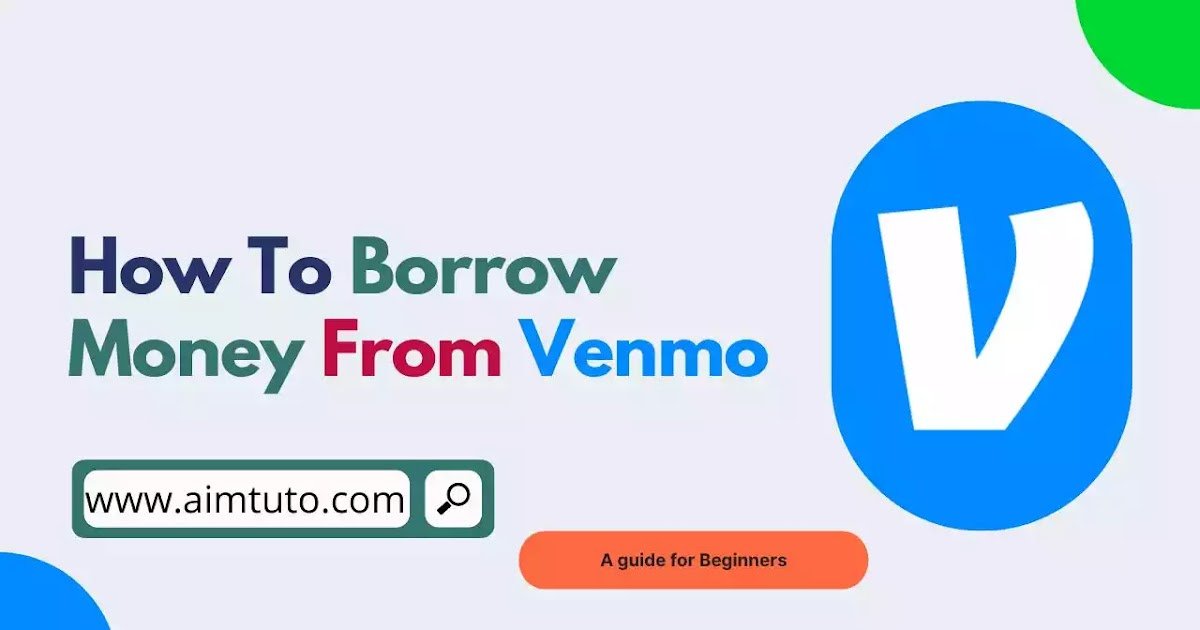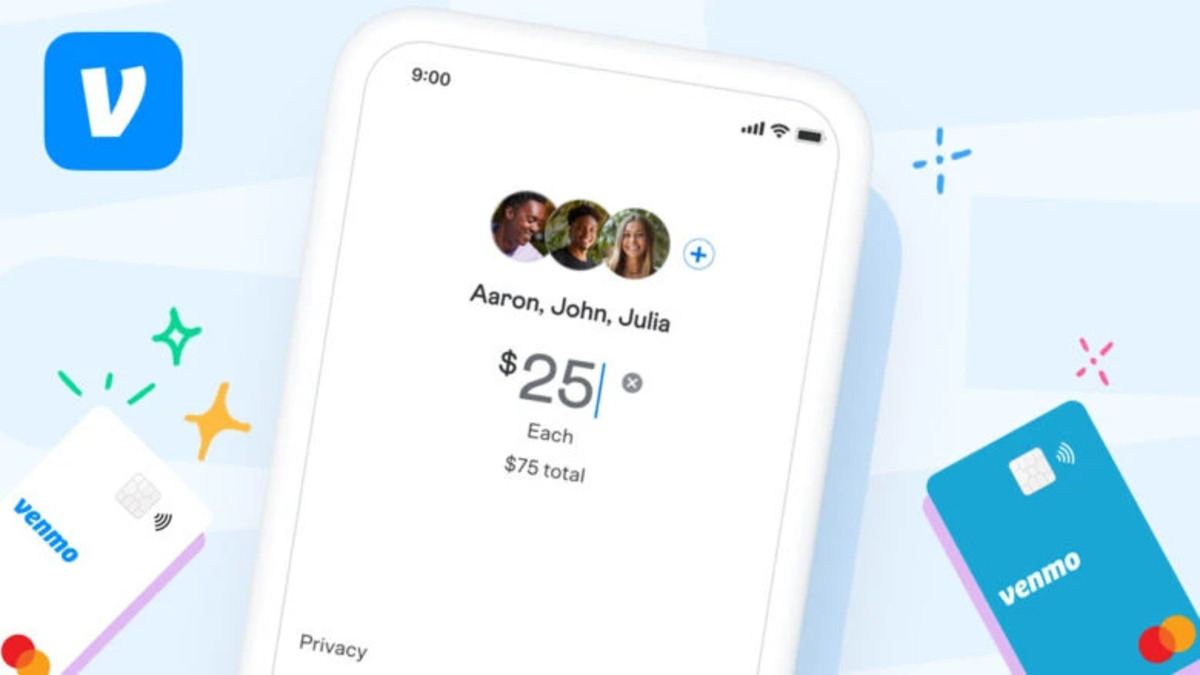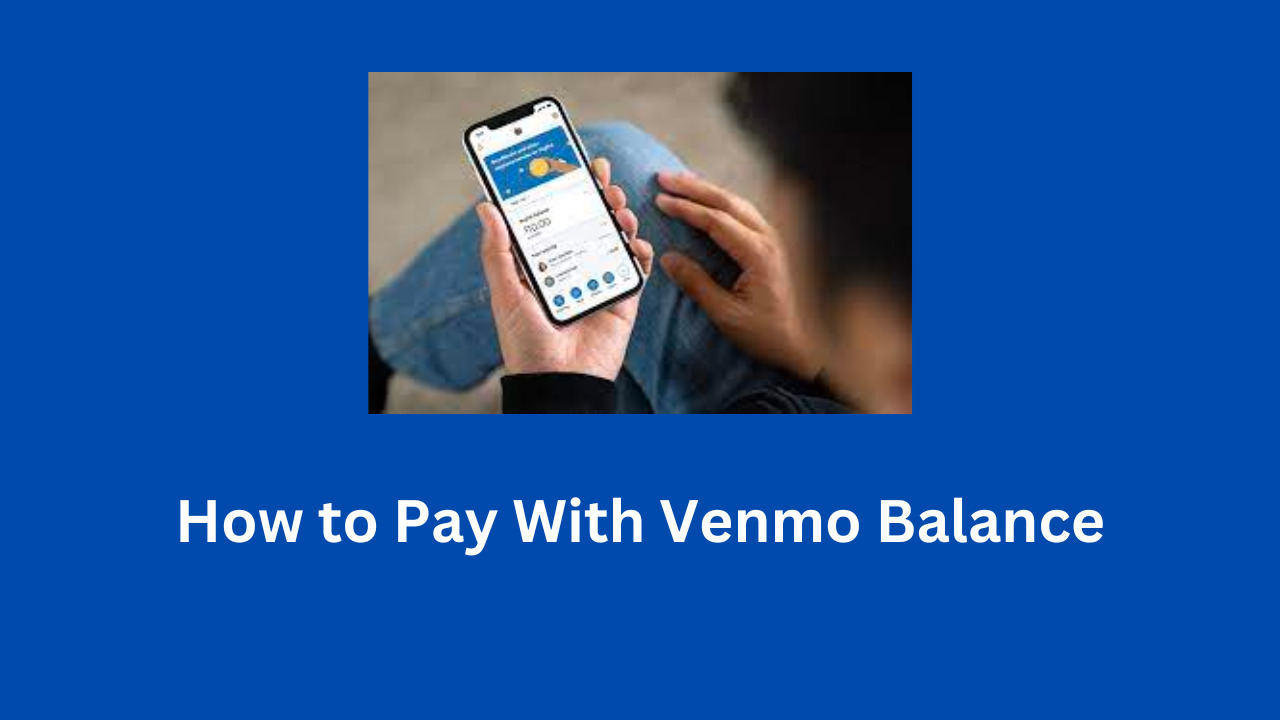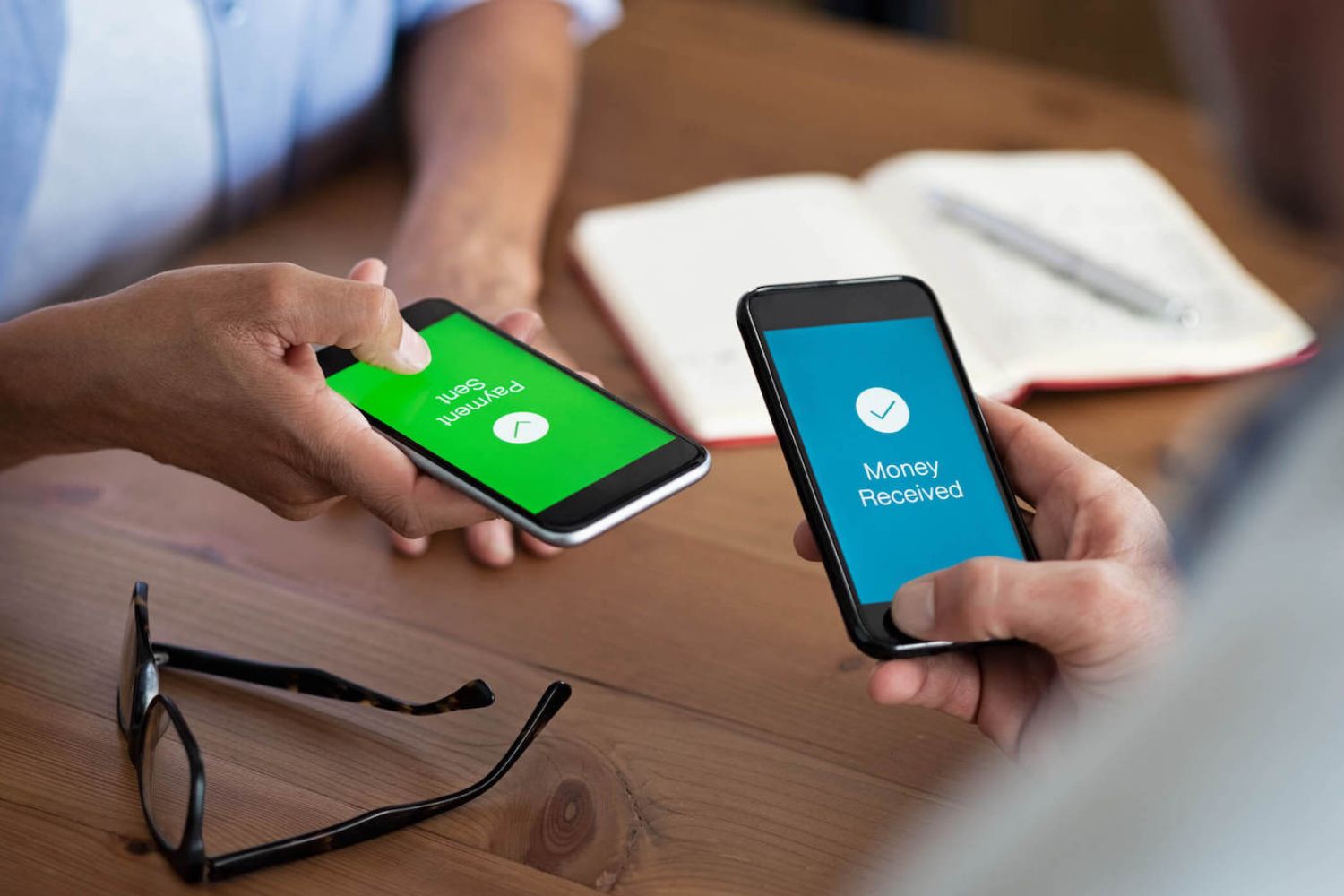Introduction
Whether you need to cover unexpected expenses or finance a small project, borrowing money from friends and family has become more convenient than ever, thanks to online payment platforms. One such platform that has gained popularity is Venmo.
Venmo, a subsidiary of PayPal, is a peer-to-peer payment app that allows users to send and receive money easily from their mobile devices. While it is primarily used for splitting bills or reimbursing friends, Venmo can also be a convenient way to borrow money.
In this article, we will guide you through the process of borrowing money on Venmo, ensuring that you have a smooth and hassle-free experience. We will walk you through setting up your Venmo account, adding a payment method, identifying a trustworthy borrower, requesting money, establishing loan terms, tracking loans and repayments, and providing safety tips and best practices to protect your financial transactions on the platform.
By the end of this article, you will have a clear understanding of how to effectively borrow money on Venmo and navigate the lending process with confidence and ease.
Setting Up Your Venmo Account
Before you can start borrowing money on Venmo, you’ll need to set up your account. Follow these simple steps to get started:
- Download the Venmo app: Visit your app store and search for “Venmo.” Download and install the app on your mobile device.
- Create an account: Open the Venmo app and sign up with your email address or phone number. Choose a strong password to secure your account.
- Verify your identity: Venmo may require you to provide additional information to verify your identity. This helps ensure the security of your transactions.
- Add your profile information: Customize your Venmo profile by adding a profile picture and a description that represents you. This will help create trust with potential lenders.
Once you’ve completed these steps, your Venmo account is ready to use. You can now proceed to the next section to learn how to add a payment method to facilitate borrowing and lending on Venmo.
Adding a Payment Method
In order to borrow money on Venmo, you’ll need to add a valid payment method to your account. Venmo offers several options for adding and managing payment methods:
- Linking a bank account: One of the most common methods is linking your bank account. Venmo allows you to securely connect your checking or savings account to your profile. This enables you to transfer money between your bank and Venmo account seamlessly.
- Adding a debit or credit card: If you prefer to use a card for your transactions, you can add a debit or credit card to your Venmo account. This allows you to make instant payments or transfers directly from your card.
- Using Venmo balance: When other Venmo users pay you, the funds are added to your Venmo balance. This balance can be used as a payment method for borrowing money or making payments to others.
- PayPal integration: Since Venmo is owned by PayPal, you have the option to link your PayPal account to Venmo. This allows you to access your PayPal balance and use it for transactions on Venmo.
To add a payment method:
- Open the Venmo app and navigate to the menu.
- Select “Settings,” and then choose “Payment Methods.”
- Follow the prompts to add and verify your desired payment method.
It’s important to note that Venmo may charge fees for certain types of transactions. Familiarize yourself with the fee structure to ensure you understand any potential charges associated with borrowing money or receiving payments on the platform.
Now that you have successfully added a payment method, you’re ready to move on to the next section and discover how to identify a trustworthy borrower on Venmo.
Identifying a Trustworthy Borrower
When it comes to borrowing money on Venmo, it’s crucial to choose a trustworthy borrower. While Venmo provides a level of security, it’s important to exercise caution and consider the following factors before lending money:
- Connections and Mutual Friends: Prioritize borrowers who are part of your network or have mutual friends. This can provide a higher level of trust and accountability.
- Positive Reviews and Ratings: On Venmo, users have the option to review and rate their payment experiences. Look for borrowers with positive feedback from previous lenders.
- Verification and Identity: Venmo offers a verification process for users who choose to go through it. Consider lending money to borrowers who have completed this process, as they have provided additional identity information to the platform.
- Open and Honest Communication: Engage in open and honest communication with potential borrowers. Ask questions about the purpose of the loan and their repayment plan. Trust your instincts and look for borrowers who are transparent and responsive.
- Established Payment History: Take into account the borrower’s history of repayments and financial transactions on Venmo. Look for borrowers who have a track record of timely repayments and responsible financial behavior.
It’s important to note that even with these precautions, lending money always carries some level of risk. Consider the amount you feel comfortable lending and ensure that it won’t adversely impact your financial well-being if repayment is delayed or not received.
By carefully considering these factors and exercising due diligence, you can identify a trustworthy borrower and minimize potential risks when borrowing money on Venmo.
Requesting Money on Venmo
Once you have identified a trustworthy borrower, it’s time to request the money on Venmo. Follow these steps to initiate the borrowing process:
- Open the Venmo app: Launch the Venmo app on your mobile device and navigate to the home screen.
- Tap on the “Request” button: On the home screen, you’ll see a “Request” button at the bottom. Tap on it to proceed.
- Enter the borrower’s details: In the “To” field, enter the username, email address, phone number, or select the borrower from your contacts list.
- Specify the amount: Enter the amount you wish to borrow from the borrower. You can also add a note to provide context or any specific repayment terms.
- Optional: Add a reminder: If necessary, you can set a reminder to prompt the borrower to make the payment by a specific date.
- Tap on “Request”: Once you have entered all the necessary details, tap on the “Request” button to send the money request to the borrower.
After sending the request, the borrower will receive a notification on their Venmo app and email, if applicable. They can then choose to accept or decline the request.
It is important to have clear and open communication with the borrower during this stage. Discuss the repayment terms, including the timeline and any applicable interest or fees, to ensure both parties are on the same page.
Remember, Venmo is a peer-to-peer payment platform, and there is no guarantee of repayment. It’s crucial to establish trust and communicate effectively to ensure a seamless borrowing experience.
Now that you have successfully requested the money, let’s move on to the next section and explore how to establish loan terms and a repayment plan on Venmo.
Establishing Loan Terms and Repayment Plan
When borrowing money on Venmo, it’s important to establish clear loan terms and a repayment plan with your borrower. This ensures both parties are aware of their responsibilities and prevents misunderstandings. Follow these steps to establish loan terms on Venmo:
- Communicate openly: Engage in open and transparent communication with the borrower. Discuss the loan amount, repayment timeline, and any additional terms or conditions.
- Agree on the repayment schedule: Determine the frequency and timeline of repayments. Whether it’s a one-time payment or multiple installments, make sure both parties are comfortable with the repayment schedule.
- Specify any interest or fees: If applicable, discuss and agree upon any interest charges or fees related to the loan. Be clear about the terms and ensure both parties understand and agree to the additional costs.
- Put it in writing: While not mandatory, it’s a good practice to document the loan terms and repayment plan in writing. This can be done through email, text message, or a shared document. Having a written agreement helps avoid confusion and provides a record of the agreed-upon terms.
Venmo does not provide any formal loan agreement templates, so it’s essential to create your own document or utilize online resources to generate a loan agreement that suits your specific needs.
Remember, when lending or borrowing money on Venmo, it’s important to be mindful of the potential risks involved. While Venmo offers convenience and security, it does not provide the same level of protection as traditional financial institutions.
By establishing clear loan terms and a repayment plan, you can minimize misunderstandings and ensure a smooth and mutually beneficial borrowing experience on Venmo.
Next, we’ll explore the process of confirming the borrower’s payment and marking it as received on Venmo.
Confirming the Borrower’s Payment
Once the borrower has made the repayment on Venmo, it is important to confirm the payment to ensure accurate record-keeping and maintain transparency in your borrowing process. Follow these steps to confirm the borrower’s payment:
- Open the Venmo app: Launch the Venmo app on your mobile device and navigate to the home screen.
- Tap on the “☰” icon: This is located in the upper-left corner of the screen and will open the main menu.
- Select “Incomplete” or “Incomplete Payments”: Depending on the app version, the terminology may slightly vary. Look for a section that displays incomplete payments or pending transactions.
- Locate the borrower’s payment: Look for the specific payment from the borrower that you want to confirm.
- Tap on the payment: Open the payment details and review the information to ensure accuracy.
- Confirm the payment: Tap on the “Confirm” or “Mark Received” button to officially confirm that you have received the borrower’s payment.
Once you have confirmed the payment, Venmo will update the status of the transaction to “Complete” or “Received.” This action marks the repayment as successfully received and helps you keep track of your loan and repayment history.
It is essential to promptly confirm the borrower’s payment to maintain accurate records and promptly identify any discrepancies. If you encounter any issues or believe there is an error with the payment, communicate with the borrower to address the situation. Open and honest communication is key to resolving any payment-related concerns.
Tracking your loans and repayments on Venmo allows you to stay organized and have a clear overview of your lending activities. In the next section, we will explore how you can effectively track your loans and repayments on the Venmo app.
Tracking Your Loans and Repayments
Tracking your loans and repayments on Venmo is essential to stay organized and maintain a clear overview of your borrowing activities. Fortunately, Venmo provides several features that can help you effectively manage and track your loans. Here’s how you can track your loans and repayments on Venmo:
- Transaction History: Venmo keeps a detailed transaction history, which allows you to easily review your loans and repayments. Simply navigate to the transaction history section on the app to view a chronological list of your financial activities.
- Search Function: If you have a large number of transactions, you can utilize the search bar within the Venmo app. This enables you to search for specific borrowers or loan amounts, making it easier to find the relevant transactions.
- Payment Notes: When confirming the borrower’s payment, you have the option to add notes to the transaction. Utilize this feature to include any additional information or reminders related to the loan. This helps you keep track of the purpose or terms of the loan.
- Categorizing Transactions: Venmo allows you to categorize your transactions, including loans and repayments, using labels. You can create custom labels to differentiate between various types of transactions, making it easier to identify and track your loans.
Regularly reviewing your transaction history and keeping it up to date can help you monitor your loans and identify any outstanding repayments. It’s good practice to periodically check your records and reconcile them with the borrower’s payments to ensure accuracy.
Additionally, consider maintaining a separate record outside of Venmo. This can be a spreadsheet, notebook, or any other method that suits your preference. This extra record can provide an extra layer of organization and serve as a backup in case you encounter any issues with the Venmo app or need additional information for tax purposes.
By effectively tracking your loans and repayments on Venmo, you can maintain clarity and successfully manage your borrowing activities on the platform.
In the next section, we will explore the importance of communication and follow-up when borrowing money on Venmo.
Communication and Follow-Up
When it comes to borrowing money on Venmo, clear and consistent communication is key to ensuring a smooth and successful experience. Establishing effective communication channels and maintaining regular follow-up with the borrower are crucial. Here are some important aspects to consider:
- Set Expectations: Clearly communicate your expectations and requirements to the borrower right from the beginning. Define the repayment timeline, any applicable interest or fees, and the preferred method of communication.
- Response Time: Promptly respond to any messages or inquiries from the borrower. Timely communication fosters trust and helps resolve any issues or concerns efficiently.
- Document Everything: Keep a record of all communication related to the loan. This includes messages, emails, or any other form of communication exchanged. Having a written record helps prevent misunderstandings and provides a reference in case of disputes.
- Regular Follow-Up: It’s important to follow up regularly with the borrower to ensure they stay on track with repayments. Send friendly reminders near the due dates and maintain open lines of communication throughout the borrowing period.
- Flexibility and Understanding: Understand that unexpected situations can arise, and the borrower may encounter difficulties in making timely payments. Be open to discussing alternative arrangements or offering support during challenging times.
By maintaining clear communication and establishing a respectful and supportive relationship with the borrower, you can navigate any potential issues and ensure a positive lending experience on Venmo.
However, it’s necessary to exercise caution and prioritize your financial well-being when lending money. Be mindful of the potential risks involved and avoid lending amounts that could cause financial strain or hardship.
Now that you understand the importance of communication and follow-up, let’s move on to the next section where we will discuss some safety tips and best practices to protect your financial transactions on Venmo.
Safety Tips and Best Practices
When borrowing money on Venmo, it is essential to prioritize the security of your financial transactions. By following these safety tips and best practices, you can protect yourself and ensure a safe borrowing experience:
- Set Privacy Settings: Review and adjust your privacy settings on Venmo. Choose whether to make your transactions public or visible only to your selected contacts.
- Verify User Identity: Before lending money, verify the identity of the borrower. Double-check their Venmo profile and consider establishing a level of trust through additional means such as mutual connections or shared references.
- Use Strong Authentication: Enable strong authentication methods offered by Venmo, such as two-factor authentication (2FA), to add an extra layer of security to your account.
- Avoid Sharing Sensitive Information: Be cautious about sharing sensitive personal or financial information through Venmo messages. Use secure communication channels outside of the app for such exchanges if necessary.
- Report Suspicious Activity: If you notice any suspicious or fraudulent activity on your Venmo account, report it immediately to Venmo’s customer support. They can investigate the issue and take appropriate action.
- Regularly Update and Monitor: Keep your Venmo app up to date with the latest version available. Regularly review your transaction history and monitor your account for any unauthorized activity.
- Trust Your Instincts: If something seems off or too good to be true, trust your instincts and exercise caution. Avoid lending large sums of money to unfamiliar borrowers or those with questionable reputation.
- Stay Informed: Stay updated on Venmo’s security features, terms of service, and any updates or changes to their policies. Being informed helps you make educated decisions and protect yourself.
While Venmo provides security measures, it’s important to remember that no platform is entirely immune to risk. Be vigilant and use your discretion when engaging in financial transactions, even on reputable platforms like Venmo.
By following these safety tips and best practices, you can enhance the security of your Venmo account and protect your financial transactions when borrowing money.
As a responsible borrower, it is crucial to prioritize the repayment of loans and respect the trust placed in you by lenders. Now, let’s wrap up this article by summarizing the key points discussed.
Conclusion
Borrowing money on Venmo can be a convenient and efficient way to cover expenses or pursue personal projects. By following the steps outlined in this article, you can navigate the borrowing process with confidence and ensure a positive experience.
We began by guiding you through setting up your Venmo account and adding a payment method. We emphasized the importance of identifying a trustworthy borrower and establishing clear loan terms and a repayment plan. We also discussed the significance of confirming the borrower’s payment and tracking your loans and repayments.
Furthermore, we highlighted the necessity of effective communication and regular follow-up to ensure transparency and prevent misunderstandings. We concluded by providing safety tips and best practices to safeguard your financial transactions on Venmo.
Remember, while Venmo provides a convenient platform for borrowing money, it is essential to exercise caution and prioritize your financial well-being. Be mindful of the risks involved and only lend or borrow amounts that align with your financial capabilities.
By following these guidelines and adopting best practices, you can make the most out of your borrowing experience on Venmo while safeguarding your financial security. Now, you are well-equipped to embark on your borrowing journey with confidence.

























